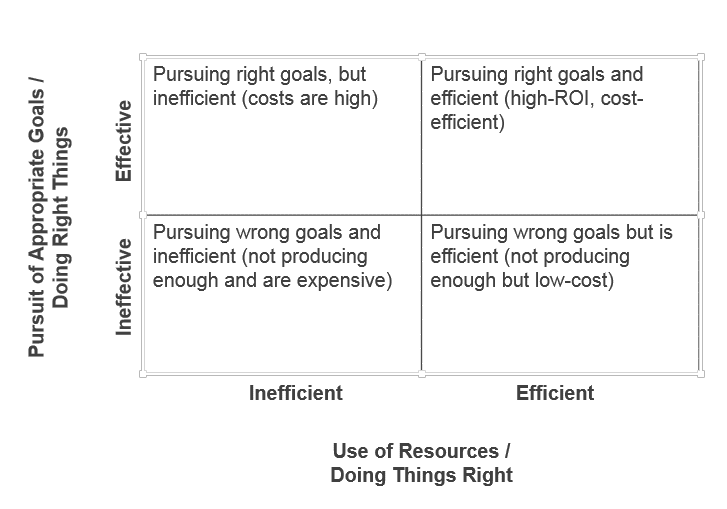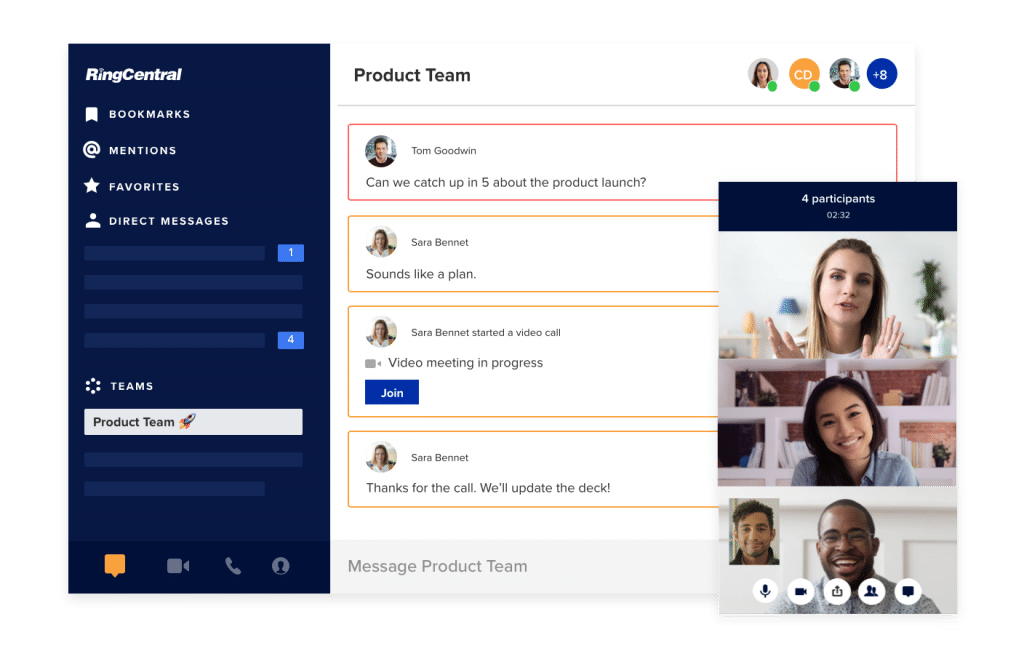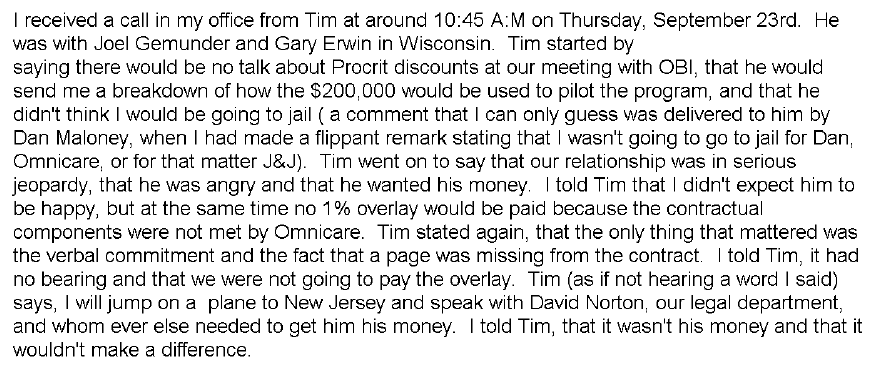Small businesses, to remain competitive, are constantly on the lookout for ways to be as efficient as possible. Or is it effective? Does it have to be one or the other? And what do these terms really mean?
Let’s start at the beginning. For small businesses, the opportunity and challenge has never been greater. Technology has leveled the playing field and helped smaller organizations capture market share from industry heavyweights. For every product, service, or solution on the market, there’s a way of delivering it smarter, faster, or cheaper.
But in order to compete, small businesses need to accomplish two things: they need to do more things quickly, and they need to have the things they do carry more of an impact. Or, they need to be both efficient and effective.
Let’s look at what both of these terms mean.
Efficiency, explained efficiently
Efficiency is the ability to produce something with minimal time, effort, or resources.
Effectiveness, explained effectively
As a small business, you probably have a lot of outputs—sales, locations, customers served, customer satisfaction, and employee satisfaction are a few that you might measure. There are a number of different inputs you can use to influence those outputs—marketing campaigns, customer service standards, and employee wellness campaigns can all impact how those outputs perform.
Effectiveness looks at how impactful those various inputs are, based on outcomes.
For example, let’s say your usual marketing campaigns contribute $10,000 in revenue to your business, on average. But your latest marketing campaign delivers $100,000. Based on the returns over what was expected, it would be easy to conclude that your new marketing campaign was effective.
In short, if something is done quickly or with minimal resources, it’s efficient. If it’s done well, it’s effective. Subtle differences, to be sure, but how you optimize for each can have a dramatic impact on your business.
Why the difference matters
Efficiency and effectiveness can both have big time impacts on business outputs—but when it comes to optimizing for each, there are subtle differences.
When optimizing for efficiency, focus on volume. When optimizing for effectiveness, focus on impact.
For small businesses with limited resources and human capital to solve problems, they’re probably torn over which area to focus on first. Do you want to get more done with what you have, or do you want the things you do to be more impactful? To understand, let’s look at the outcome for different combinations of the two measurements:

Low efficiency/Low effectiveness
This is the absolute worst place to be. Ineffective projects carried out with poor efficiency mean your organization is burning precious resources, whether it’s time, money, or effort, on projects that don’t even contribute to your business goals. In order to lift yourself out of this quadrant, projects need to be optimized for efficiency or effectiveness (or both!)
High efficiency/Low effectiveness
Now we’re getting somewhere. Projects in this quadrant might not result in the highest impact to the business, but at least they’re being done efficiently (though we don’t know many business owners that would call the efficient pursuit of nothing a win).
A lot of companies can end up occupying this quadrant unintentionally—either because they’re measuring the wrong metrics (such as focusing solely on output) or because they aren’t measuring them at all. At the very least, work performed in this quadrant won’t burn through company resources as quickly as low efficiency projects.
High effectiveness/Low efficiency
Getting warmer. These projects still come at an enormous cost to the business in terms of resources, but at least they’re contributing in a meaningful way. Work completed here is performed inefficiently—either due to the wrong processes, people, or tools—but is pursuing the right business goals and having the expected impact.
The majority of productivity improvements seem to focus on this area, assuming that businesses are at least chasing the right goals (not always true!)
High effectiveness/High efficiency
The Holy Grail of productivity—effective and efficient teams are both delivering work that has the maximum impact and doing so with less time, money, and energy than expected. Cost-conscious businesses (which should be all of them) should be optimizing teams to work in this quadrant as often as possible—delivering impactful work with minimal resources.
3 tips for improving effectiveness
So you want to be a more effective business—we can’t say we blame you. By maximizing effectiveness, you’ll be able to enable your teams to do more with less and make sure that everything shipped out the door is in the service of having a greater impact on business outcomes. Here are three tips that can help.
1. Know your numbers
Is your goal higher customer satisfaction? Lower cost of acquisition? Greater employee engagement? Regardless of what they’re after, effective businesses know their numbers inside and out and pursue them religiously. They make sure goals are clearly communicated company-wide and that teams are collaborating in pursuit of them.
Use business dashboards and metrics reporting to keep tabs on your objectives, and empower employees to be always asking “How can we do this better?”
Use modern communication tools to help keep staff aligned, wherever they might be located. For example, RingCentral has a mobile app that lets you make video calls, phone calls, and even send instant messages to your team:

Make video calls, phone calls, and even send instant messages to your team using RingCentral mobile app
Constantly test and experiment to figure out which initiatives are delivering the greatest results—then test again. Because the most effective businesses aren’t just the ones that know the numbers that matter and chase them, they’re the ones that are continually looking for ways to do things better.
2. Invest in education
One of the best ways to make sure your headcount is having an oversized impact is to keep leveling up their skills through ongoing education. Whether that means internal education and enablement or springing for courses and conferences, developing your employees can turn any business into an effective one.
After all, an individual employee is relatively static—they’ll always count as one person on the headcount, regardless of their contributions. But by investing in development, you can multiply the output from individual employees so that they have a greater impact on the business.
In addition to individual employee contributions, investing in training and development can also have a profound effect on employee retention and satisfaction—and help you maximize your investment in your staff.
3. Communicate better
Communication is the lifeblood of any business. Regardless of whether you’re C-Suite or a fresh hire, how business goals, objectives, mission, values, and performance are communicated across the organization can have a massive impact on business performance. When discussing “effectiveness” in a business context, the number one topic is effective communication. Communicating effectively can make all your other business outputs flow more smoothly.
To communicate effectively, we recommend making communication easy and two-way—and enabling it to take place often. Modern communication tools such as messaging apps and video conferencing software can help you solve all three of these points.
3 tips for improving efficiency
Now that you’re communicating effectively and pursuing the right organization goals, it’s time to do those things more efficiently or in a way that costs less time, money, and effort, freeing staff up to invest more resources in pursuing new objectives.
1. Limit interruptions
Interruptions are the great killer of efficiency in any business. The effects of interruptions in business are well-documented: it takes employees up to 25 minutes to return to a task they were working on prior to being interrupted; a 2.8 second interruption can double employee error rates; and collectively, interruptions cost the US economy $588 billion a year.
For businesses to be as efficient as possible, interruptions need to be limited as much as humanly (or robotically) possible. This is where communication tools can play a huge role—by using modern chat tools, employees are able to communicate asynchronously (not concurrently) or in real time as required.
Rather than continually bombard staff with interruptions, they can now respond on their own schedule. Voice calls or video conferencing can help you make decisions quickly and effectively, compared to relying on email (which continually ranks near the top of employee interruptions, and, as anyone who’s spent time on an email thread can attest, takes forever to get anything accomplished).

A bad email. Source: CBS News
2. Automate away
Even in the age of AI and task automation, employees are still wasting a surprising amount of time on manual and repetitive tasks. In fact, a recent study found that over 40% of workers surveyed spent at least a quarter of their work week on tasks that could be automated, with data collection, approvals, and status update requests occupying the majority of their time.
Businesses no longer have excuses for not automating these processes. Doing so will free employees up to work on projects and tasks that will yield greater results than endless status update requests. Letting software or programs take care of the manual, repetitive tasks can save businesses up to $4 million annually.
Use tools like RingCentral to automate and streamline the way your team communicates, and link up your apps with each other using something like Zapier, which creates neat workflows that save you from doing repetitive tasks like updating information from one app to another.
3. Embrace the telecommute
After years of business owners being remote work skeptics, the statistics are telling a different story. Employees who work from home are 13% more productive than office employees, likely due to fewer interruptions and not being required to commute. Employees who work from home work 1.4 more days each month than their in-office counterparts, due to less sick and late time and working a flexible schedule throughout the day.
In addition to the productivity and efficiency gains documented regarding telecommuting, it also has a profound impact on employee satisfaction and wellness—improving job satisfaction by 8% and satisfaction with work-life balance by 5%.
Efficiency vs effectiveness: why not both?
Effectiveness and efficiency may look similar on the surface (and are frequently used interchangeably in a business context), but they’re both very different levers that businesses can use to drive results.
By focusing on improving both, you’ll be able to achieve greater success, remain competitive, and get more for less.
Originally published Mar 02, 2020, updated Jun 20, 2024





